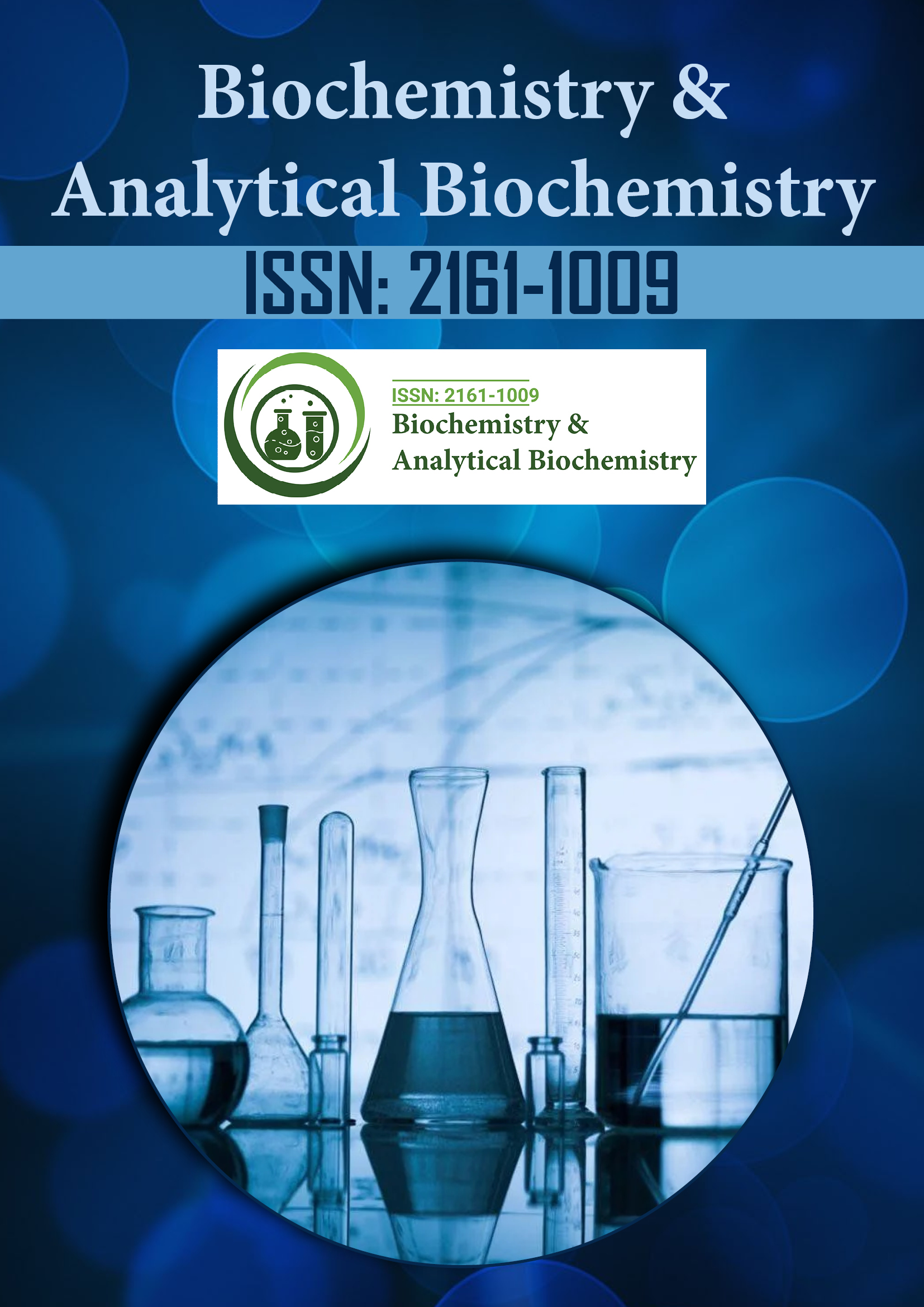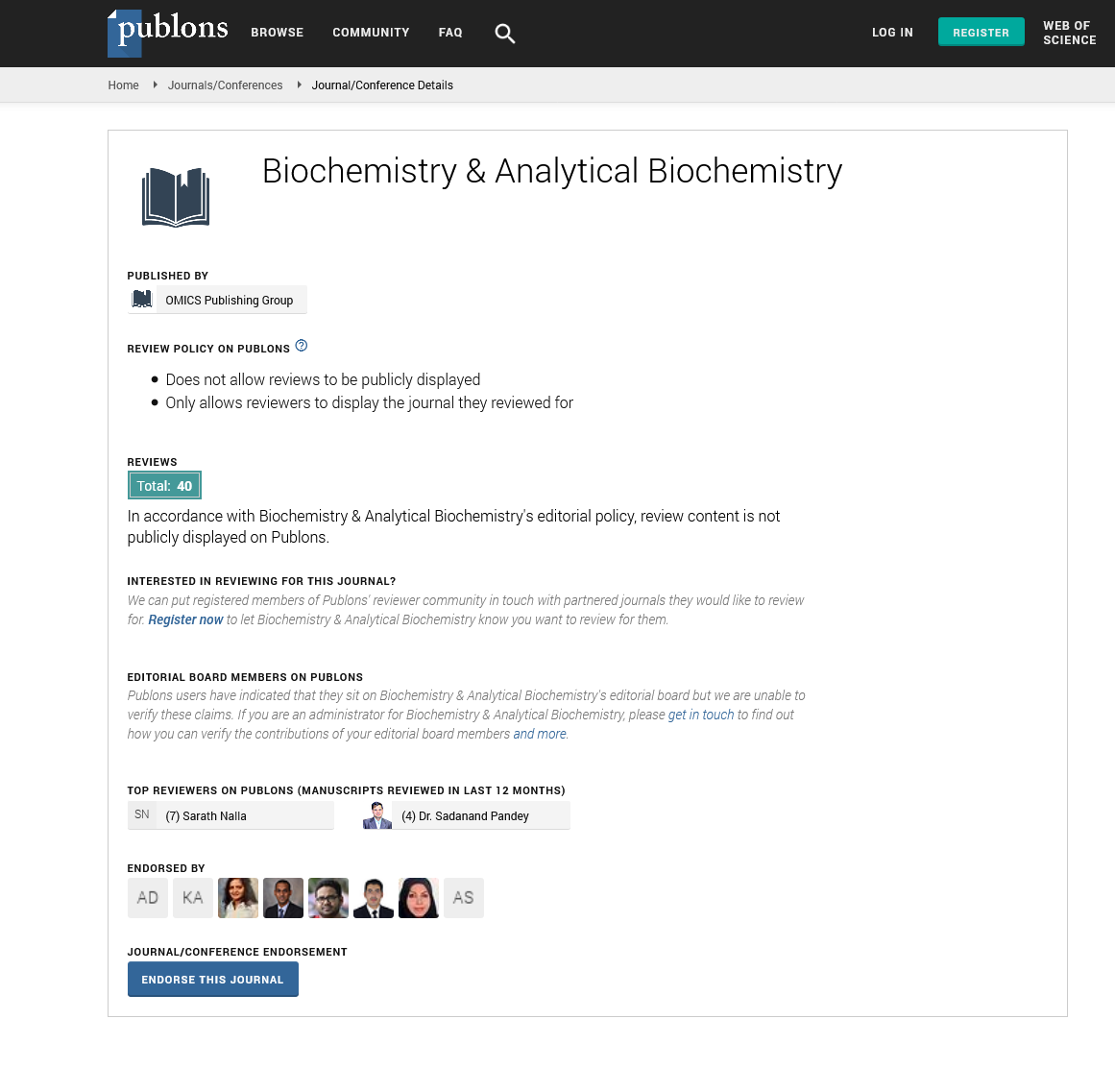Indexed In
- Open J Gate
- Genamics JournalSeek
- ResearchBible
- RefSeek
- Directory of Research Journal Indexing (DRJI)
- Hamdard University
- EBSCO A-Z
- OCLC- WorldCat
- Scholarsteer
- Publons
- MIAR
- Euro Pub
- Google Scholar
Useful Links
Share This Page
Journal Flyer

Open Access Journals
- Agri and Aquaculture
- Biochemistry
- Bioinformatics & Systems Biology
- Business & Management
- Chemistry
- Clinical Sciences
- Engineering
- Food & Nutrition
- General Science
- Genetics & Molecular Biology
- Immunology & Microbiology
- Medical Sciences
- Neuroscience & Psychology
- Nursing & Health Care
- Pharmaceutical Sciences
Opinion Article - (2025) Volume 14, Issue 1
Redefining Enzyme Specificity: Catalysts Deserve a Central Role in Modern Biochemistry
Anita Molnar*Received: 03-Mar-2025 Editor assigned: 05-Mar-2025 Reviewed: 19-Mar-2025 Revised: 26-Mar-2025 Published: 02-Apr-2025, DOI: 10.35248/2161-1009.25.14.572
Description
For decades, the classical view of enzymes has been tightly bound to the principle of specificity — the idea that enzymes catalyze a single reaction with high fidelity, acting on one substrate or a closely related family of substrates. This principle, first formalized in the lock-and-key and induced-fit models, served to explain the exquisite precision of biological chemistry. However, a growing body of evidence now suggests that many enzymes are far from strictly specific. Instead, they exhibit “promiscuity,” catalyzing secondary, alternative reactions that may have physiological relevance. In my opinion, it is time to re-evaluate this foundational concept in biochemistry and recognize enzyme promiscuity not as a biochemical accident but as an evolutionary and regulatory asset.
The term “enzyme promiscuity” often carries a negative connotation — suggesting inefficiency, error, or unwanted side activity. Yet studies have shown that even well-characterized enzymes like cytochrome P450s, serine hydrolases and glutathione S-transferases perform alternative reactions under certain cellular conditions. These promiscuous activities are not always negligible or rare; in some cases, they are biologically significant and even essential. In microorganisms, for instance, metabolic flexibility — often mediated by promiscuous enzymes — is a key survival strategy under nutrient stress.
Evolutionary biochemistry provides a compelling rationale for such behavior. Promiscuity may represent the molecular starting point from which new enzymatic functions evolve. The concept of “substrate ambiguity” allows for functional drift under selection pressure, enabling gene duplication and divergence. Rather than a liability, promiscuity provides raw material for adaptability. Enzymes that can catalyze more than one reaction give cells a survival advantage in changing environments. They are, in essence, biochemical generalists with latent potential.
More provocatively, enzyme promiscuity may play a regulatory role even in higher organisms. Consider how cellular metabolism fluctuates in response to stress, disease, or environmental signals. The availability of substrates, cofactors and local conditions like pH or redox potential can shift enzyme behavior. In such contexts, a promiscuous activity may become predominant, subtly redirecting metabolic flux. For example, under oxidative stress, some glycolytic enzymes exhibit secondary oxidoreductase activity, contributing to redox balance. These activities are not necessarily errors but adaptive features that expand the cell’s functional toolkit.
The implications for biochemistry and drug development are profound. Many side effects in pharmacology stem from off-target metabolism — reactions catalyzed by enzymes engaging in promiscuous activity with xenobiotic compounds. Instead of viewing this as an anomaly, we should develop predictive models that incorporate enzyme plasticity. A better understanding of promiscuity could enhance the design of prodrugs, enzyme inhibitors and biocatalysts, reducing toxicity and improving therapeutic precision.
Moreover, in synthetic biology and biotechnology, enzyme promiscuity is increasingly exploited. Engineered enzymes are designed for substrate flexibility, allowing for the synthesis of novel compounds or environmental bioremediation. In these cases, promiscuity is not a problem to fix, but a feature to harness. Directed evolution techniques, such as error-prone PCR and DNA shuffling, often rely on a starting enzyme’s promiscuous activity to generate useful diversity. Without this inherent flexibility, enzyme engineering would be far more limited in scope.
Despite these advances, the prevailing mindset in many textbooks and academic settings still champions specificity as the ideal. Students are often taught that enzyme function is binary: active or inactive, specific or nonspecific, correct or incorrect. This oversimplification does a disservice to the complexity and dynamism of biological systems. The cellular environment is noisy, crowded and constantly shifting. In such a context, biochemical “imperfection” may actually represent robustness and versatility.
In redefining enzyme specificity, we must also reconsider how we classify and annotate enzymes. The current Enzyme Commission (EC) system is based on strict reaction types and substrate specificity. This taxonomy, while useful for standardization, fails to capture the multi-functionality and context-dependent behavior of many enzymes. Integrating data from high-throughput metabolomics, structural proteomics and computational modeling could lead to a more nuanced and functional classification system — one that reflects biochemical reality rather than idealized theory.
Citation: Molnar A (2025). Redefining Enzyme Specificity: Catalysts Deserve a Central Role in Modern Biochemistry. Biochem Anal Biochem.14:572.
Copyright: © 2025 Molnar A. This is an open access article distributed under the terms of the Creative Commons Attribution License, which permits unrestricted use, distribution, and reproduction in any medium, provided the original author and source are credited.

